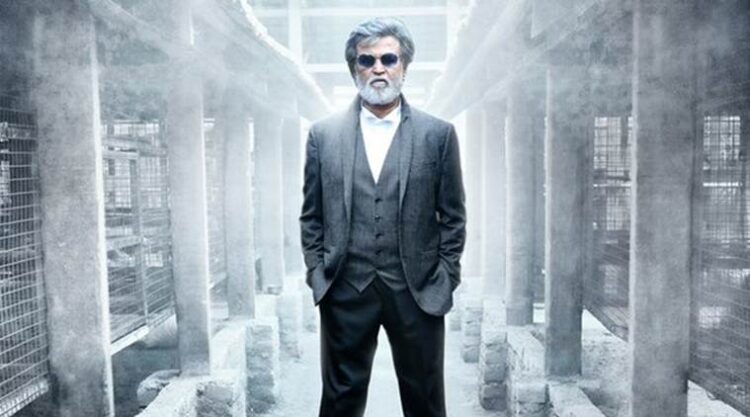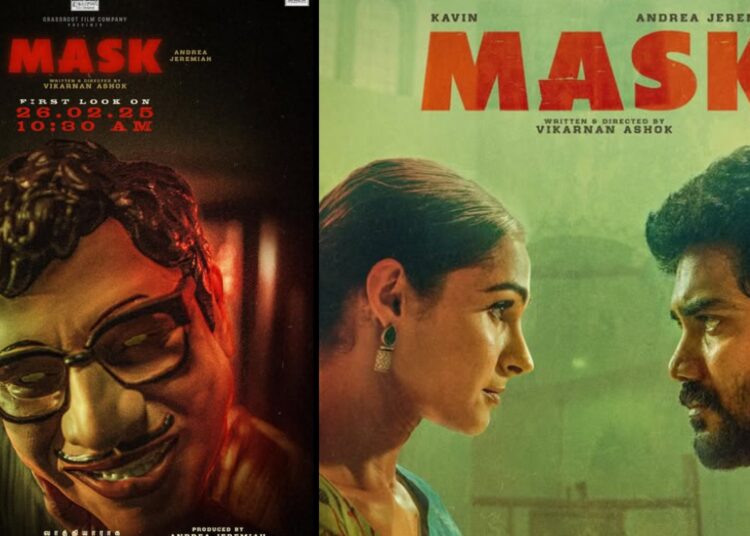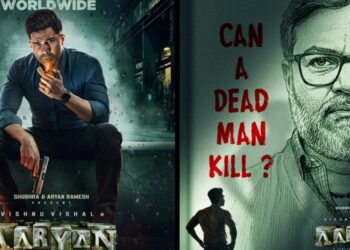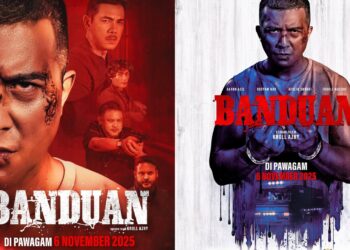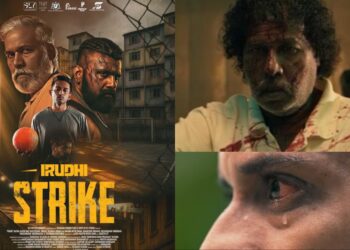I am a huge fan of Superstar Rajnikanth and have been since I was a kid (courtesy of my dad). I remember following my dad to line up for Padaiyappa tickets when I was six. That was way back in 1999. Last year, 17 years later, I stood (and sat on the floor) in line, for seven hours to purchase opening midnight tickets to Kabali.
I walked into the cinema with my excitement and expectation levels sky high. I walked out with my blood boiling. What a load of horseshit, I thought to myself, fuming. My dad loved it, though. So, was it just my expectations? Maybe lining up for seven hours wore me out.
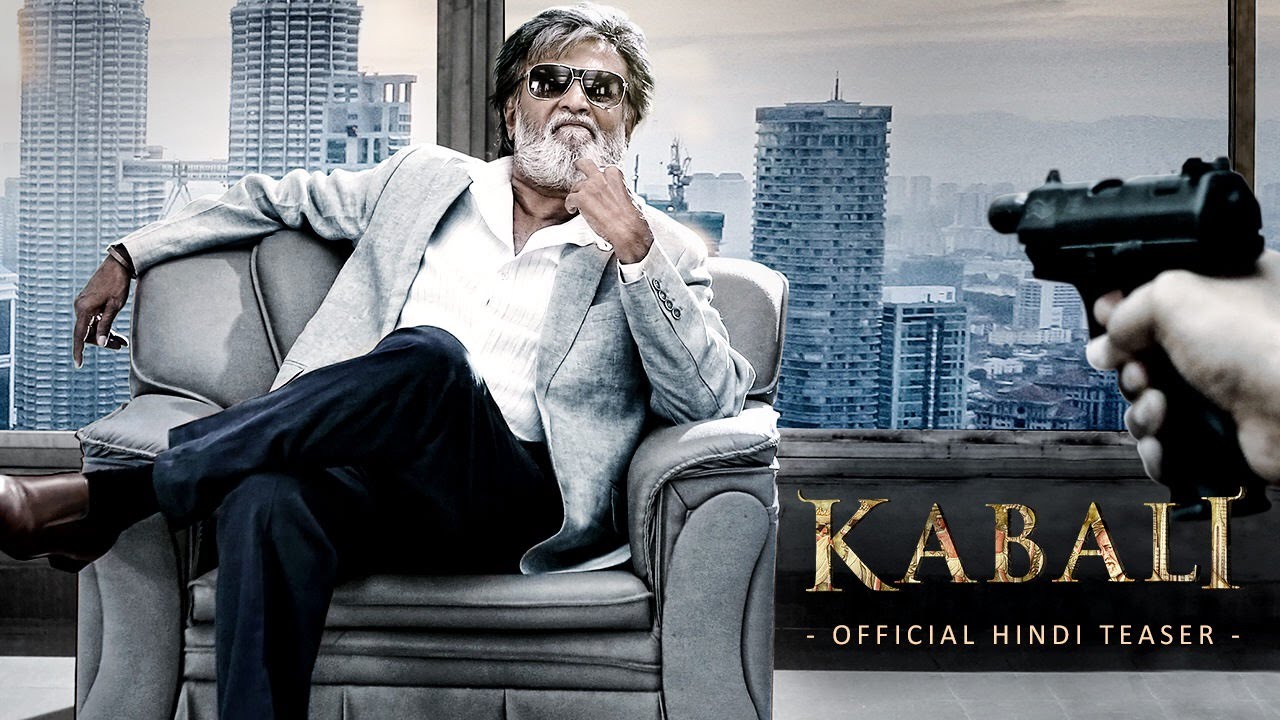
Yesterday, more than a year after its release, I decided to give Kabali another shot. The movie works so much better on the small screen than it does on the big. This isn’t a compliment. On the small screen, the flaws are not as obvious. And boy, does this movie have a lot of flaws. But none of which has to do with Rajnikanth himself.
Rajnikanth is great in this movie, as always. Say what you want about the man’s “acting” chops — I get it, he isn’t as transformative as Kamal Hassan — but when it comes to charisma and bonafide star power, he is one of the best and biggest in the world, right up there with Clint Eastwood, Dwayne “The Rock” Johnson, Bruce Lee and Amitabh Bachchan.
The introduction to Kabali is excellent. We see him in prison — it’s been 25 years since he got arrested — reading My Father Baliah, a book about a Dalit family in South India, written by YB Satyanarayana. This is an interesting detail that director Pa. Ranjith chose to include. It gives us an idea of what the movie is going to be about (Or at the very least, what Pa. Ranjith wants us to think the movie is about).
Before walking out of his prison cell, Kabali does a pull-up. It is a scene so clearly designed to get audiences cheering. Why did he need to do a pull-up? Would Francis Ford Coppola have shot a scene of Don Vito Corleone doing a pull-up? Would Frank Costello from The Departed do a pull-up?
Pull-ups suggest physical strength. I would think a gangster as eminent as Kabali would make his enemies shit bricks without needing to show off his physicality. What annoys me more than the pull-up, is how the scene is cut. It is so poorly edited that it highlights more than it hides Rajni’s inability to actually do a pull-up.
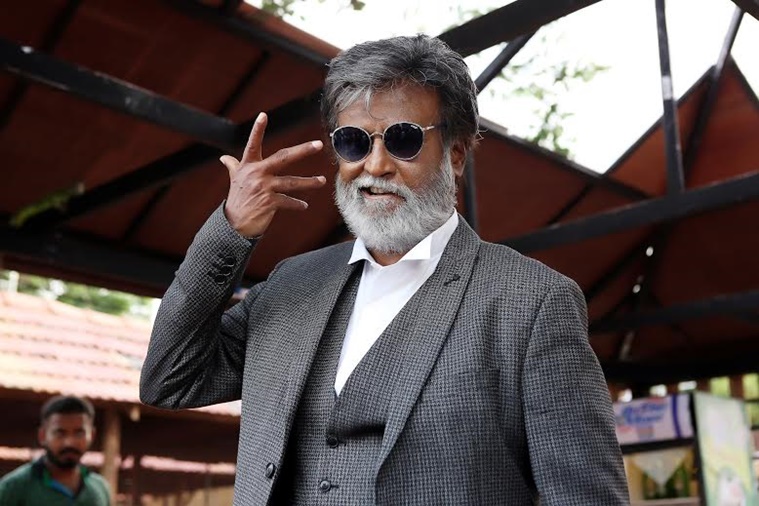
But the movie recovers immediately. As Kabali walks away from his prison cell, the convicts applaud, in a beautifully shot sequence that will send shivers down your spine. This is how you highlight a don with POWER. Kabali suiting up is another great moment. We get the impression that this will be a very different version of our Superstar that we’ve seen in Muthu, Arunachalam, and Sivaji. Indeed, we later learn that the suits he dons are not so much for style (though, he does look mighty stylish in em), but rather, a symbol of oppression that he has overcome.
But every time the film does something impressive, it follows it up with something else that will make you wonder if this is a first-year film student project. Kabali’s interaction with his longtime friend Ameer (John Vijay) outside of the prison is cringeworthy. John Vijay’s line delivery is embarrassing and he has zero chemistry with Rajni, a recurring issue in this movie.
Tony Lee is the name of our villain. He supposedly represents a class of society that play an active role in the oppression of Indians in Malaysia. That is the idea, at least. In reality, he’s just another poorly written, depthless villain. One who resembles a mashup between a James Bond baddie from the 70s and made in China Elvis Presley. His loud suits can’t compensate his lack of personality or purpose. Winston Chao, who plays Tony Lee seems to be in a different movie. He constantly overacts in an outlandish manner, reminding me of Elizabeth Banks in this year’s Power Rangers.
Yogi (Dhansika) and Jeeva (Dinesh) give a good performance throughout. Dinesh, especially, gets lost in his role. Nassar is solid in his brief appearance, too, as one would expect. But everyone else is borderline terrible. As in bloody effing terrible. So terrible, I can’t help but wonder if they were cast simply because they’re friends with some important people who were financing the movie.
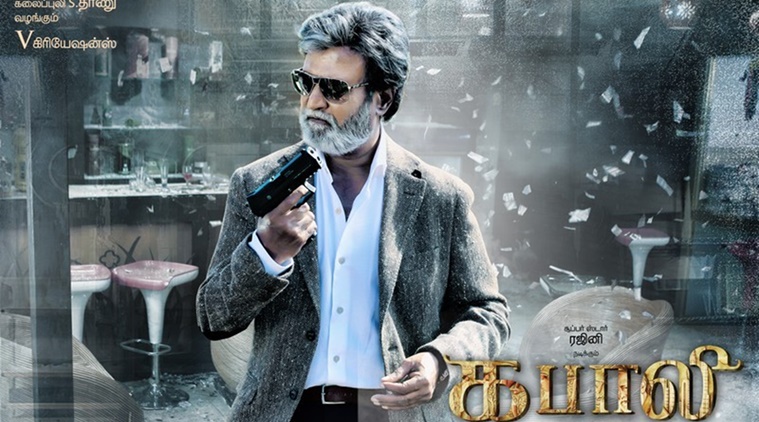
Santhosh Narayanan’s opening number is a thing of beauty. It is one of the best opening numbers in a Rajnikanth movie. Yes, joining the ranks of classics like Naan Autokaaran, Vanthenda Paalkaran, and Rakkamma Kaiya Thattu. While these songs are exciting dance anthems, Kabali’s Ulagam Oruvanukka grabs your hand and raises it up in the air. It tells you to soar as high as you can; the sky is the limit. It reminds me of Eminem’s Not Afraid.
Here, Rajnikanth doesn’t dance at a quick pace like he usually does. He plays his age. When he busts a move at the end of the song, I shed a tear. This is our Superstar, at 67 years of age, still magnetic as ever.
The one weak point of the song involves Kabali using a sword to cut his cake. It is a moment that feels out of place — one that highlights Pa. Ranjith’s lack of confidence. He seems to be unsure if he wants to tell a smaller story or pander to Rajni diehards. Wouldn’t it have been a more effective moment to see the usually extravagant Rajnikanth simply and ordinarily blow the candles?
Pa. Ranjith’s nervousness extends throughout the movie, with glaring tonal inconsistencies from start to finish. It is disappointing, considering the quality of his first two films — Attakathi, starring Dinesh and a Karthi starring Madras — yet understandable, as those films do not come with the enormous pressure, that one would imagine, is ever present when making a Rajnikanth blockbuster.
But no film is above criticism. And I am writing this with the hopes that a few months from now when Pa. Ranjith’s next Rajni film, Kaala, hits the big screen, I can look back at this article and smile at how far this young director has come.
With that said, the screenplay also by Pa. Ranjith is loose. This is a movie that moves from scene to scene like a headless chicken. Does Pa. Ranjith want to tell a gritty political drama, emphasizing on race and castes, or is this a mass masala, in which Rajnikanth will singlehandedly go on a killing spree, ALA John Wick. It does not have to be one or the other; the key is finding the right balance.
The themes are there: Racial politics, economic disability, oppression, and kinship. The execution of the themes is lackluster. We’re told through expository dialogue that the Indians are oppressed. Show me. Make me feel the pain and sufferings. We’re told that the Chinese had it easier. But it isn’t explored. Pa. Ranjith should’ve dug deep into it and showed us both sides of the coin. Show me, through the narrative how oppression and poverty can lead to gangsterism. SHOW, don’t TELL.
I get the impression that Pa. Ranjith is afraid. Afraid that he might rub people the wrong way; Afraid that in telling a completely bare and honest story, it would’ve have been too controversial; Afraid that had he really painted a grime and gritty picture, it would’ve alienated certain groups of people, which could’ve resulted in a lower box office gross. Perhaps. But it would’ve been a BETTER movie and isn’t that the damn point?
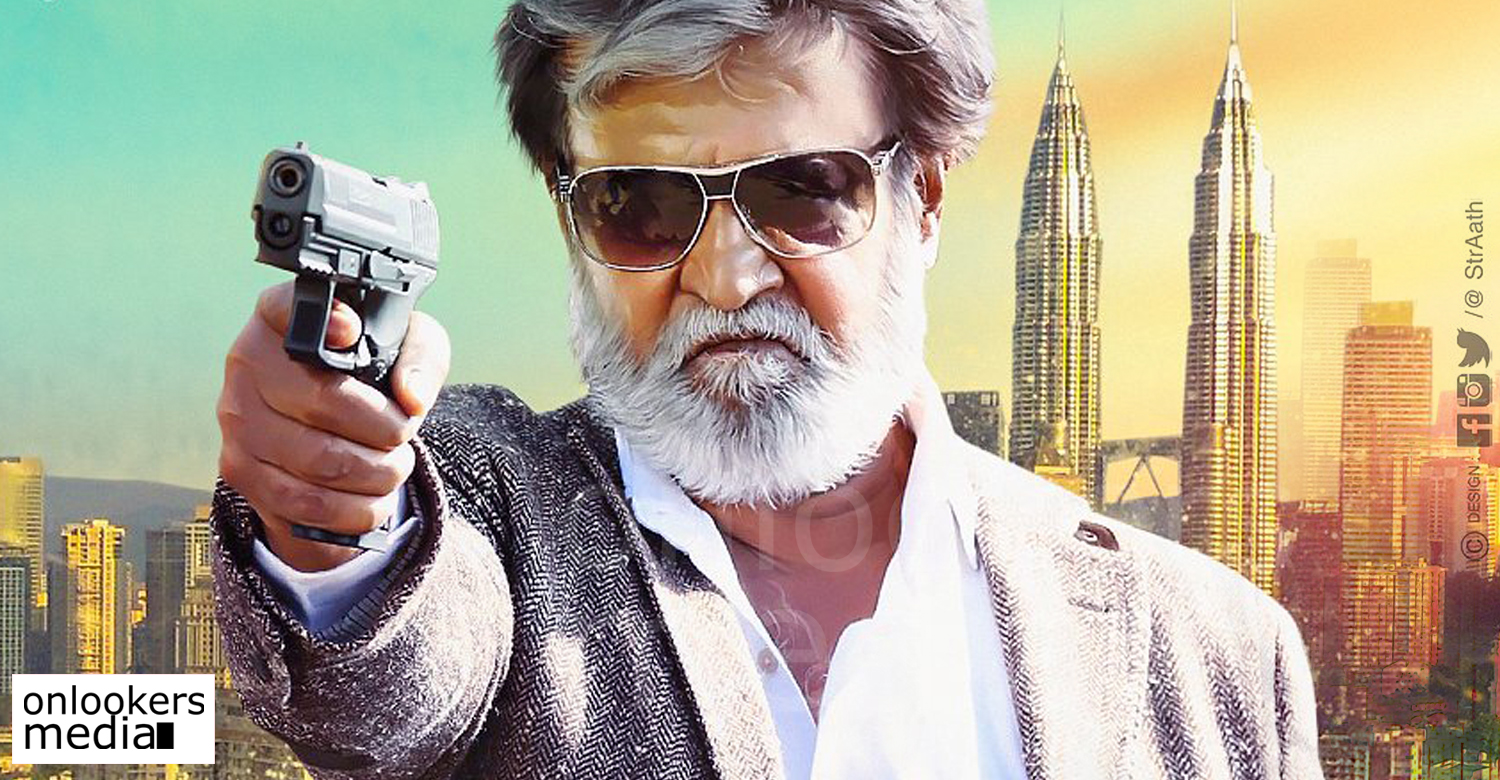
The entire angle with Kabali’s wife does nothing but bog down the movie. There is a place for romance in a story like this. Again, we must look at The Godfather Trilogy, particularly Part II. The romantic relationship between Michael (Al Pacino) and Kay (Diane Keaton) is compelling. Not only does the relationship serve the overall story, it also provides us a deeper understanding of the kind of man Michael is.
Here, Pa. Ranjith TRIES to do that, but it is so Kollywoodized, it loses any sense of depth or realism. The romance starts in melodramatic fashion, ends in melodramatic fashion and in between there is a weird sequence in which Kabali travels around India looking for his thought-to-be-dead wife. The entire sequence goes on and on and on and on. It lasts 30 minutes but feels like nine hours.
I wonder what compelled Pa. Ranjith to write such an aimless side story? What is the purpose of this so-called twist? When it’s revealed that his wife is alive, Kabali walks onto an open field in front of his house and drops to the ground. It is a moment that literally made me flinch. It is that Even Rajnikanth who is usually flawless, cannot save this scene.The movie would have flowed better if Kabali’s wife, played by Radhika Apte, remained dead.
Speaking of arbitrary twists, what on earth is up with the scene in which Yogi reveals herself to be Kabali’s daughter? Are we supposed to be mindblown? Because my mind has never felt less blown in my entire life. The pointless twist is made worse by the amateurish directorial efforts.
Yogi screams “Appaaaaaa” out of nowhere and the action sequence that follows plays in slow-motion, with IN YOUR FACE melodramatic music. I could feel Pa. Ranjith clenching me by my collar and screaming, “This is where you feel shocked and emotional!!!” Nope. This is where I wondered if I’m watching a Kollywood Masala or one of those shitty Tamil serials old people watch during their free time.
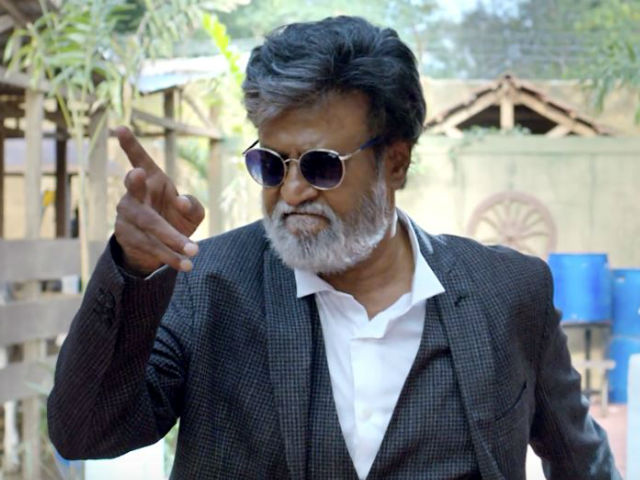
Kabali is an ugly film. It is poorly shot and poorly edited. Besides the prison sequence that takes place very early on in the film, there isn’t a single frame that is composed well. Everything looks cheap and lacking in standard. And I won’t accept “production budget” as an excuse. Vetri Maaran’s Visaranai, another 2016 film, is a wonderfully shot almost-masterpiece that has a mere budget of $USD 314 000. Kabali, on the other hand, has a budget of $USD 15 million.
There is also a serious lack of attention to detail. In an early scene, Rajni visits the school that he funds. His friend shows him a glass cabinet where all confiscated gangsterism related items are stored. We see a gun and right beside it, we see… Playboy wristbands. Wait, whaatt? How on earth are Playboy-branded wristbands related to gangs? These are rubber wristbands you can buy in any random ass accessory shop in shopping malls.
There are also a couple of scenes where important moments take place on the road, and the roads are EMPTY. You expect people to believe that roads in the middle of Kuala freaking Lumpur are EMPTY?? Couldn’t there have been extras driving around to make it look realistic?
Kabali has a lot of scenes that are quite obviously inspired by Baasha, which is in and of itself not a problem. It becomes a problem when those scenes come off as cheap imitations rather than inspirations. The flashback scene in Baasha that details the rise of regular joe Manickam to big-time don, Baasha is a well-executed arc that is emotional, riveting and MASS. Here, it barely grazes the surface. The scene where Tony’s men lose confidence in him and leave the table also mirrors a scene in the 1995 epic. In Baasha, it is a fist-pumping scene; here it is poorly acted.

There are moments of greatness in this film. Like the aforementioned opening prison sequence. Or the scene where Kabali talks to a group of his men at a restaurant. Or the jaw-dropping, gruesome sequence where Jeeva gets beaten to a pulp by Tony’s men. These are some of the better scenes not just of this movie, but of any Tamil movie in the past 20 years. It is Pa. Ranjith at his most confident, showing us that he has the potential to be the next Mani Ratnam, down the line. But a film isn’t about a few great moments. It is about the overall narrative. It is about characters’ journey. And in that regard, Kabali is a giant disappointment.
Follow us on Instagram, Facebook or Telegram for more updates and breaking news.


